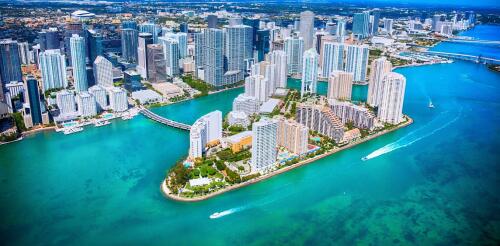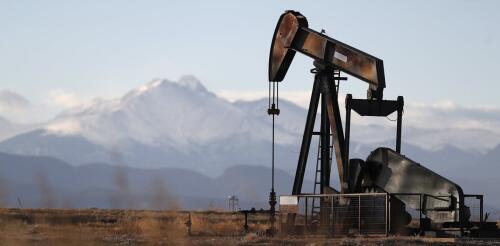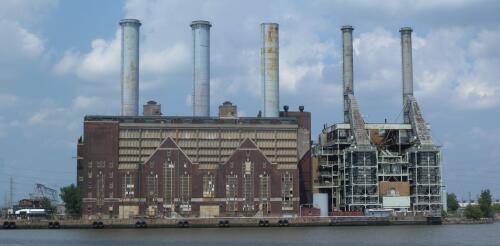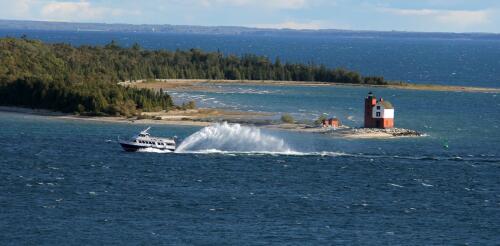Local
PFAS, the “forever chemicals” that have been raising health concerns across the country, are not just a problem in drinking water. As these chemicals leach out of failing septic systems and landfills and wash off airport runways and farm fields, they can end up in streams that ultimately discharge into ocean ecosystems where fish, dolphins, manatees, sharks and other marine species live. We study the risks from these persistent pollutants in coastal environments as environmental analytical chemists at Florida International University’s Institute of the Environment. Because PFAS can enter the food chain and accumulate in marine plants and animals, including fish that humans eat, the spread of these chemicals has ecological and human health implications. Biscayne Bay and nearby coastal areas are teeming with fish, including many varieties that people eat. NPS image by Shaun Wolfe I...
During the height of the COVID-19 pandemic, Detroit residents got a break from water shut-offs. In March 2020, just after the coronavirus made hand-washing a matter of public health, the City of Detroit announced a plan that kept water services on for residents for US$25 a month, with the first payment covered by the state. Although all Detroiters had access to water during the pandemic, they continued to be billed at the higher standard rates. In early 2023, Detroit resumed water shut-offs for bill nonpayment. Approximately 60,000, or 27% of Detroit’s 220,000 residential customers, had past-due bills last summer, according to the Detroit Water and Sewerage Department. The average customer owes $700, but some owe as much as $10,000 due to years of unpaid bills. Although a variety of factors contribute to large past-due balances, water services in Detroit are expensive for many households, and the costs are rising. We are geographers and policy analysts with an intere...
On a recent visit to Rangely, a small town in northwest Colorado, my colleagues and I met with the administrators of a highly regarded community college to discuss the town’s economy. Leaving the scenic campus, we saw families driving into the mountains in off-road vehicles, a favorite activity for this outdoors-loving community. With a median household income above US$70,000 and a low cost of living, Rangely does not have the signs of a town in economic distress. But an existential risk looms over Rangely. The town is here because of an oil boom during World War II. Today, the oil and gas industry contributes over half of the county’s economic output. Rangely is not unique in the United States, which is the world’s largest producer of oil and natural gas. There are towns across the country that depend on the oil and gas industry for well-paying jobs and public revenues that fund their schools and other critical services. A heavy dependence on any single indus...
The U.S. is nearing the end of one of its hottest summers on record. Across the nation, heat waves have driven peak electricity demand on some days to levels far exceeding seasonal averages. Grid operators rely on so-called “peaker” plants to ensure they will have enough supply to meet these demand surges. Peaker units can start up quickly and at relatively low cost, but they typically burn more fuel per unit of electricity produced than other types of fossil fuel units. Because they are less efficient than other plants, peakers typically run only during high-demand periods. Historically, peakers have run for less than 10% of the year, often for just a few hours at a stretch. Nonetheless, their higher emissions per unit of electricity produced raise environmental and health concerns. As of 2021, there were 999 peaker plants across the U.S., in all 50 states. About 70% of these plants burned natural gas, and the rest were powered by oil and coal. To reduce air p...
Should states and Indigenous nations be able to influence energy projects they view as harmful or contrary to their laws and values? This question lies at the center of a heated debate over Enbridge Energy’s Line 5 pipeline, which carries oil and natural gas across Wisconsin and Michigan. Courts, regulatory agencies and political leaders are deciding whether Enbridge should be allowed to keep its pipeline in place for another 99 years, with upgrades. The state of Michigan and the Bad River Tribe in Wisconsin want to close the pipeline down immediately. My expertise is in Great Lakes water and energy policy, environmental protection and sustainability leadership. I have analyzed and taught these issues as a sustainability scholar, and I have worked on them as the National Wildlife Federation’s Great Lakes regional executive director from 2015 until early 2023. In my view, the future of Line 5 has become a defining issue for the future of the Great Lakes region. It...



